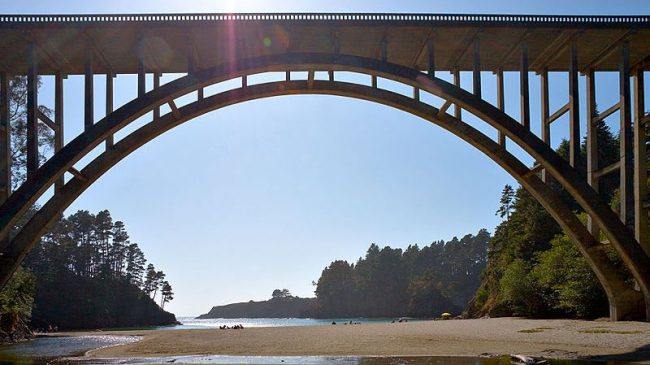President Trump promised a $1 trillion infrastructure program on the campaign trail, and has stuck with it since the election. Details are still thin, but we know something of how the initiative will work and what that will mean for Florida.
Trump’s infrastructure initiative focuses on leveraging private capital investment in key federal, state and local projects by using public-private partnerships, known as P3s. This would generally apply to projects that have robust user-fee revenue streams, like toll fees for toll roads, water and sewer fees, port fees and the like. These P3s would finance, redesign, rebuild and modernize, operate and maintain aging or undersized airport, highway, seaport, water-supply and waste-treatment facilities using a mix of debt and equity funding, without making taxpayers foot all of the bill.
A lot of needy facilities in the United States could benefit from such investment, including 130 large-, medium- and small-hub airports, 44,000 miles of non-tolled interstate highways nearing or exceeding their 50-year design lives, more than 2,000 municipal electric and gas utilities, 99 seaports, 56,000 municipal water systems and 15,000 wastewater treatment facilities.
Florida has a significant share of those needs. The American Society of Civil Engineers’ Infrastructure Report Card cites a few examples including:
• By 2025, Florida will be the world’s top destination for a wide range of entertainment, vacation and health care travel. The state airports will need to expand considerably to accommodate increased travel.
• About 15% of Florida’s bridges are at least 50 years old, and 202 bridges are structurally deficient. Many of those will need upgrades or replacements.
• Florida’s sandy shorelines — beaches — need constant work to prevent and cope with erosion. Nearly half of the state’s 825 miles of sandy shoreline are critical erosion areas.
• Demand for fresh water in Florida is expected to increase from 6.4 billion gallons per day in 2010, to 7.7 billion gallons per day by 2030 — a 21% increase.
• State highways in Florida are in good shape, but city and county roads have significant problems with adequate capacity, funding to grow capacity with the population, and deferred maintenance.
Globally and in several dozen U.S. projects, P3s have an impressive track record with benefits including:
• Major investments much sooner, thanks to ready access to capital;
• A demonstrated track record of largely on-time completion;
• Innovation that reduces costs and/or improves performance;
• Lower life-cycle cost, since projects are designed to be efficiently maintained;
• Transfer of major risks (cost overruns, traffic shortfalls, etc.) from taxpayers to investors.
While much of our infrastructure continues to deteriorate, the United States continues to miss out on much of these benefits. In transportation alone, $160 billion of P3 projects have happened in Canada, Europe, Latin America and the United States in the past five years. But only 12.5% of that has been in this country. Trump’s infrastructure plan aims to reduce the federal barriers that make it difficult or expensive to do such projects here.
Fortunately, Florida is already a national leader in the successful use of P3s. Pew Charitable Trusts put together the accompanying map based on data from the National Conference of State Legislatures. It shows Florida has one of the most constructive legal frameworks for P3s in the nation. That framework covers housing, water and transportation projects, and enables cities, counties and school boards to use P3s as well.
Indeed, two of the most high-profile P3s in the nation in recent years were in Florida: concession agreements to improve Interstate 595 in Miami and the Port of Miami tunnel. The $663 million Port of Miami tunnel moves port traffic to and from the waterfront without going through downtown and contributing to congestion problems. The massive Interstate 4 improvement project between Jacksonville and Tampa currently underway is also a P3.
Not all of Florida’s infrastructure needs can be met by P3s. They are just one tool in the toolbox. But an important tool that may well be easier and faster to use once President Trump implements his infrastructure initiative.
This column first appeared in the Florida Business Observer.

